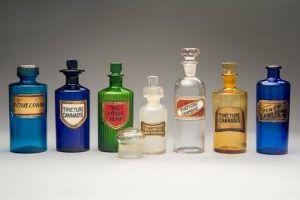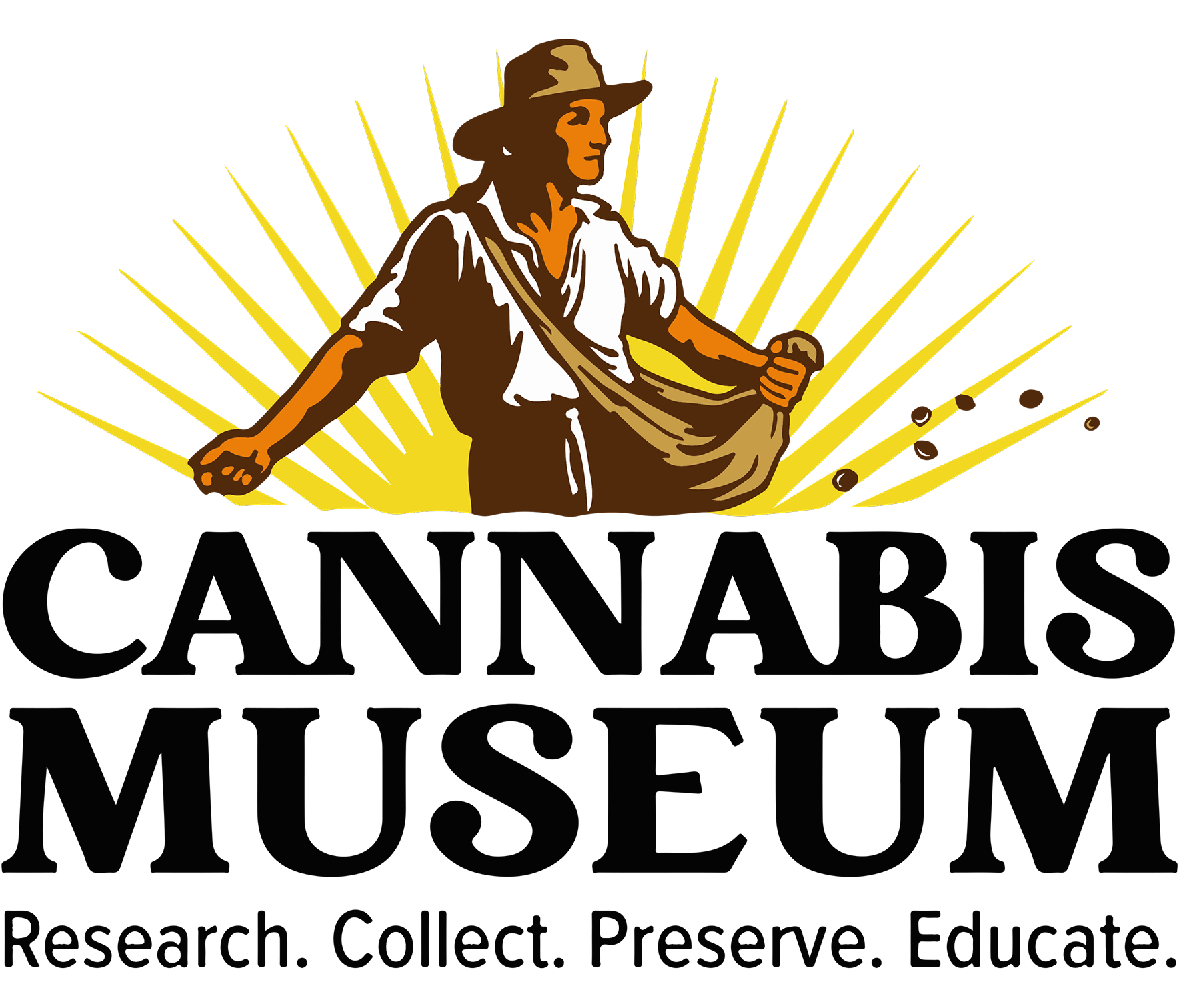Assortment of Cannabis Tincture Bottles
 Tincture of Cannabis is extracted by soaking the female flowers of the plant in a solvent, most often alcohol, although vinegars were originally used. The soaking mixture, which is left for a specific amount of time, is then strained, and the spent plant material discarded.
Tincture of Cannabis is extracted by soaking the female flowers of the plant in a solvent, most often alcohol, although vinegars were originally used. The soaking mixture, which is left for a specific amount of time, is then strained, and the spent plant material discarded.
Tinctures were widely used on their own and in compound medicines. Early tinctures were made or blended in the local apothecary to the prescribing physician’s preference. There were local and regional variations on formulation.
The U.S. Pharmacopeia standardized the preparation of extracts beginning in 1851. Cannabis remained in the Pharmacopeia until it was removed in 1942. As of 2016, Cannabis still has yet to be restored to the U.S. Pharmacopeia. Tincturing allows the extraction of Cannabis while keeping the cannabinoids in their raw, physiologically inactive state. In the growing plant, the most active principle, tetrahydrocannabinol (THC), exists in its acidic form, known as THC-A. An anti-inflammatory, neuroprotective, antiemetic with anti-cancer effects, THC-A is not psychoactive. The decarboxylated form of THC (delta-9-THC) is primarily responsible for the psychotropic effects and occurs over time—or readily converts upon heating, which results in the conversion of THC-A to THC.
Left to Right: Cannabis, aqua tincture has a hand-finished deep neck and lip, which was designed for pouring oils, and measures 7″ tall. The aqua color is from the iron oxide in the sand. The two-piece mold blown bottle has a recessed label panel with a gold leafed background. The pontil scar is ground smooth. Cannabis, mouth blown, deep cobalt tincture bottle by Evens Sell & Company of Pittsburgh, PA, which measures 8 3/8″ tall, was made between 1873 and 1877. To obtain the blue color, cobalt oxide was added to the glass. The thin prescription lip was designed for dripping oil and is fitted with a mouth blown, slightly irregular shaped stopper. Indian Hemp, green fluted tincture poison bottle by Evens Sell & Company, of Pittsburgh, PA, which measures 8″ tall, was made in a three-piece mold with a polished “prescription” lip for pouring oil. The green colored glass was made by adding iron oxide to the glass batch. Cannabis, three-piece tincture set, a wide prescription lip bottle, was mouth blown in a turn mold and measures 7 1/2″ tall. A vented pouring spout fits into the tincture neck. Its ground edge creates a friction that locks it into place. The base has a ground pontil scar. Cannabis, recessed label tincture apothecary, a mold made bottle typical of those made in the late nineteenth century by dozens of glasshouses in the eastern U.S., has a recessed glass label that shows the wear of an 8″ tall bottle that was in use for decades. Cannabis, yellow glass tincture bottle, unknown manufacturer, is 8″ tall with a handmade stopper that has a precision ground taper for a tight fit. The yellow colored bottle, produced by adding nickel to the molten glass, has a gold leaf label with red and black bands along the sides and bottom. Cannabis, cobalt blue tincture bottle by Dodge & Olcott, of New York, is an 8″ tall bottle blown into a three-piece mold that was made between 1860 and 1870.
